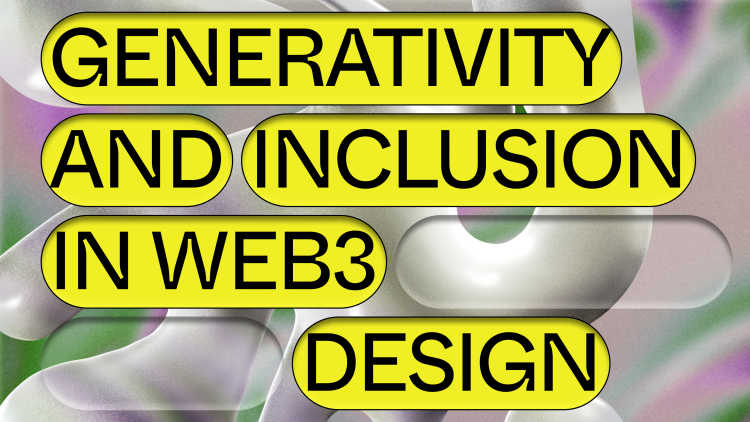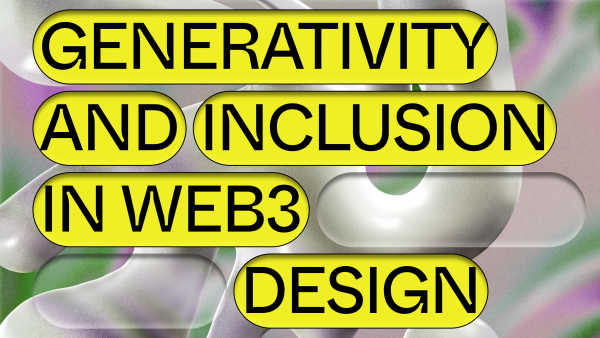Representation at Scale: Designing the DC Bat Cowl Collection.


Dive into the creative process behind the Bat Cowl Collection: a landmark edition generative art collection in creation by DC and on behalf of Palm NFT Studio, Daz3D, and Warner Bros. Consumer Products.
What does a superhero look like? How can you tell a story that captures the diversity of fan experience? Of over 80 years of comic history?
The Bat Cowl Collection aims to empower a diverse range of Batman fans with the tools to shape their own unique identity in the DC Universe, beginning with the official release of thousands of unique generative Batman-inspired cowls.
It’s an ambitious project that promises to unlock the ever-expanding DC Universe. It’s also a glimpse of what’s possible with web3 experiences. Generative art, or the creative process of conceptual art assisted by technology, holds the potential to present new ways for fans to connect with Batman while leaving their personal mark on the DC Universe.
Palm NFT Studio and Daz 3D — known for projects such as Coca-Cola Lootbox, Non-Fungible People and CloneX by Murakami / RTFKT — collaborated on the DC Bat Cowl Collection to create a system of design that welcomes every type of person to the project.
Palm NFT Studio caught up with our Creative Director, Elyse Fulcher, and Daz 3D’s Project Lead, Joshua Faustino, to gain more insight into how this massive generative art collection was accomplished.
The Bat Cowl Collection aims to empower a diverse range of Batman fans with the tools to shape their own unique identity in the DC universe, beginning with the official release of a collection of unique generative Batman-inspired cowls. What was the design philosophy behind the project?
Elyse: With a collection of this magnitude, the only way to adjust for scale is to embrace and prioritize diversity. As a queer, half-Asian woman, I often don’t feel like my interests have been prioritized or reflected in the things that I love. It’s not necessarily that my voice is the most important, but I think it indicates that other peoples’ voices, needs, and representations are also not being heard. I’m hoping that by setting an intention very early on to appeal to people who may feel like they’ve been left out of the conversation, we’ll find a way to speak to them with the colors we’ve chosen and the combinations of generative imagery that can be created. The power of Batman; the power of superheroes, is their ability to become avatars of ourselves, and our times. It was crucial that the Bat Cowls, as avatars, reflected the diversity of Batman’s global fanbase.
Could you elaborate on this notion of NFTs as avatars? That’s a pretty unique art form that’s emerged in the past few years.
Elyse: Definitely. A profile picture collection, or PFP, is a genre of NFTs that has captivated numerous fandom and art communities around the world. These digital identity-based artworks are often adopted as social media profile pictures, permeable identities, and even forms of tribe amongst digital communities. One of the first PFP NFT collections arose in the form of CryptoPunks in 2017, and the phenomenon has since transformed the way internet users view themselves online.
Joshua, how did that approach to diversity impact decisions on a technical level?
Joshua: On a technical level, building that amount of diversity into the design is a big undertaking. With over two billion possible unique permutations, each of the Bat Cowl NFTs is one of a kind. Even at that scale, we can’t sacrifice quality. Every artwork needs to be perfect. So it was very important to us that any cowl can work with any domino [eye mask], any jaw, and any gadget attachment. We paid special attention to the curvature of the cowl itself to ensure that the system is completely modular, and every piece can be interchanged seamlessly when generating hundreds of thousands of unique NFTs.
What tools did you use to create the Bat Cowls?
Elyse: Figma was huge for us in bridging the 2D and 3D workflows. It played an integral role in terms of understanding what we thought would look good together. Daz 3D and Unreal, I think, were the best tools for our 3D team; all of the art for this project began with 2D artists who were really talented concept artists. So I’ll give a little shout-out to Louisa McNicoll, plus Angie Simpson from Daz3D. The ability to instance your objects and change things really quickly, and then export those colors that you’re using directly out of Figma and send straight into the folder that Unreal is going to use is a really powerful tool for connecting 2D and 3D, while being able to test things before you even need a programmer to touch a generative script. At this point, Joshua and Ryan Goldberg of Palm NFT Studio championed the art through the 3D pipeline.
How does Daz 3D empower the production of this collection?
Joshua: One of the cool things about Daz is we’ve put a lot of work into it being able to export content into other applications. You can send content from Daz 3D into Maya or 3ds Max, Unity, or Unreal. Also, a lot is carried over in that process. Materials are coming in. Character skeletons are coming in. Daz 3D can be used for animation and all kinds of other applications.
We know the team placed an immense focus on producing the art using real-time rendering in Unreal Engine versus the traditional offline rendering techniques usually found in generative art. What are the key differences between real-time rendering and offline rendering?
Joshua: You’re always going to need to consider how your art is actually being generated. In the case of the Bat Cowl Collection, we ended up going with Unreal Engine. The main reason we did this is there are thousands Bat Cowls! If you were to try an offline rendering of these in a program like Arnold or V-Ray, it would take something like five years to create all of the models. Daz 3D is our rendering software, so it can produce really powerful offline rendering for still images. We also chose Unreal Engine for its powerful real-time rendering capability. The speed to generate our renders is key due to the number of cowls. Also, the project’s flexibility is extended to how flexible the material editor can be. Unreal Engine allowed us to bring to life the many unique materials of the collections.
I don’t want to spoil any of the materials in this collection, but I’m curious: how did you go about selecting all 192 colors, patterns, and materials?
Elyse: We went deep into the archives on this one, drawing on 83 years of Batman history to create the collection. The colors, shapes and materials found in the Bat Cowl Collection were researched alongside DC, comic book historians, and Jim Lee, Chief Creative Officer-Publisher at DC Comics. These are people who know Batman better than any one fan just consuming one piece of content. They had a very heavy influence over things that they felt worked for this program or not. It also felt like Jim Lee was having just as much fun challenging us and pushing us to think about what Batman would do at every step of the way. I think we came to a really cool conclusion where Batman starts actually becoming a part of our world through people.
How do you think the Bat Cowl Collection and other generative NFT art experiences affect this emerging intersection of community and art?
Joshua: I think the cool thing about it is that it brings a community together. Communities are as much a part of PFPs as the artwork itself. When you’re on social media and you see someone with a picture from a collection that you also own, you already feel like you can talk to them, even though you’ve never met them.
What’s next for the Bat Cowl Collection?
Elyse: This is just the beginning! These Cowls are really Batman’s invitation to initiate you as a fan into his faction. We’re incredibly excited about going on this journey with fans, and building a diverse community of Bat Cowl holders. Whether that be longtime, devoted fans, casual fans or newcomers, we’re hoping everyone will be able to see themselves in the project, feel represented and welcomed. It’s going to be a fun ride.
Batman fans from around the world can utilize the generative medium of the Bat Cowl Collection to carve out an inclusive universe of web3 empowerment for comic book fans around the world. That’s when true fandom thrives.
Stand up for Gotham, and check out nft.dcuniverse.com for more information.







